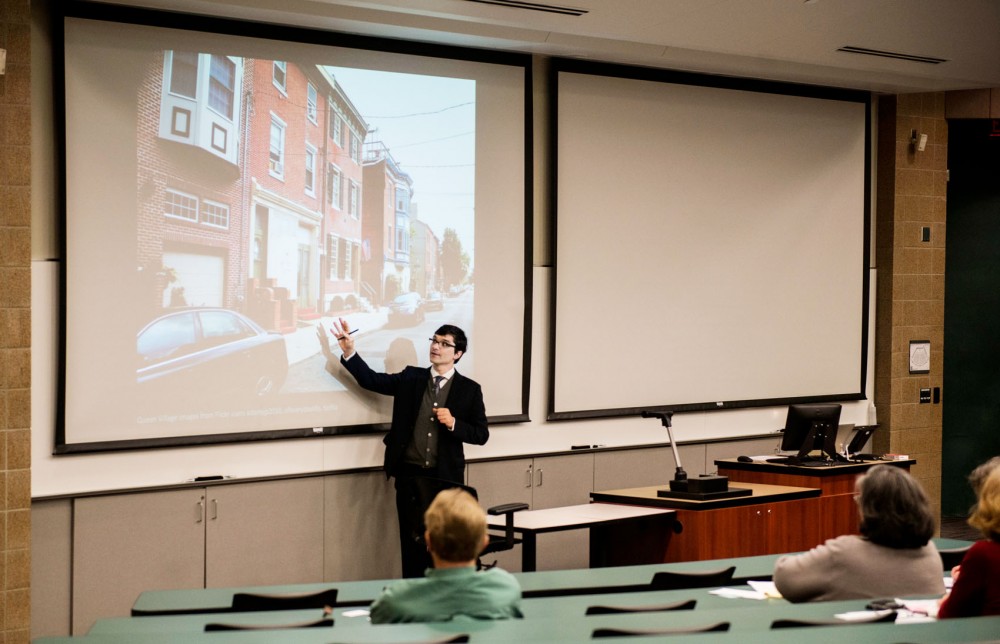Some University of Minnesota area neighborhoods may soon have the power to stop undesirable development.
Community members discussed the merits of adopting conservation districts in the Marcy-Holmes and Prospect Park neighborhoods at a forum held at the Carlson School of Management on Friday.
Ward 2 Councilman Cam Gordon, who represents Prospect Park, recently proposed an ordinance that would allow Minneapolis residents to create the districts, which have protections similar to the historic registry and would prevent development inconsistent with the community’s visual character.
The proposed ordinance, which came out of Prospect Park residents’ frustration about development in the area, is a way to make sure that development is “context sensitive,” said Minneapolis city planner and historian John Smoley, who is leading the effort to hear community input on the issue.
“Members of the public have sought greater input in ensuring that development is sensitive,” he said.
There were attempts to preserve parts of Prospect Park before much of the recent development around campus began.
Neighborhood residents wanted to include it in the National Register of Historic Places in 2001, but Gordon said “it wasn’t a good fit.”
“Minneapolis has most recently been focusing on preservation of historic architecture,” said Dick Poppele, former president of the Prospect Park East River Road Improvement Association and current member of the University District Alliance.
College of Design assistant professor Greg Donofrio, a member of the Center for Urban and Regional Affairs who spoke at the forum, said conservation districts are like the light version of historic designation — though they can be stronger than that definition would make them seem.
“Conservation districts often require a high level of community involvement,” Donofrio said at the forum. “This could be a bad thing, but encouraging public involvement can’t hurt.”
The way the current proposal is written, residents would have to identify areas they want to preserve and detail why they want to preserve them, Smoley said. These areas would have to be at least one block-face large with two or more main buildings, or be centered at an intersection and include all corner lots.
Smoley emphasized that the conservation districts would mainly preserve the “visual character” of the area. They could also define how tall buildings can be or what the landscape should look like.
One-third of property owners would have to agree to conservation proposals before the city would look into creating a conservation district, and two-thirds would have to agree on the guidelines defining the district’s
power.
During the forum, Donofrio detailed his research on conservation districts, mentioning other cities in Minnesota and around the country that have implemented similar designations.
Some cities, like Savannah, Ga., require even paint color to be approved by district guidelines.
Minnesota towns, including Red Wing and Stillwater, have had conservation districts for years. Gordon said he drew inspiration from these cities when drafting the proposal.
“I think we’ll see mixed results from the conservation districts,” he said.
Smoley and Gordon are currently working with a 20-member advisory board made up of community members and historians to recommend changes to the ordinance before committees and the full City Council vote on it.
Gordon said he hopes to have the ordinance proposal passed and the first conservation districts in the works by June or July, though he said that’s optimistic.








